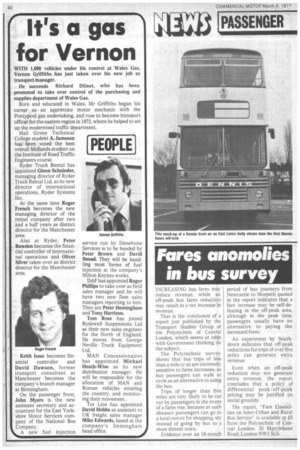Fares anomolies in bus survey
Page 46

If you've noticed an error in this article please click here to report it so we can fix it.
INCREASING bus fares may reduce revenue, while an off-peak bus fares reduction may result in a net increase in revenue.
That is the conclusion of a report just published by the Transport Studies Group of the Polytechnic of central London, which seems at odds with Government thinking on the subject.
The Polytechnic survey shows that bus trips of less than a mile or so are extremely sensitive to fares increases, as bus passengers can walk or cycle as an alternative to using the bus.
Trips of longer than five miles are very likely to be cut out by passengers in the event of a fares rise, because at such distance passengers can go to a local centre for shopping, ete instead of going by bus to a more distant town.
Evidence over an 18-month period of bus journeys from Newcastle to Morpeth quoted in the report indicates that a fare increase may be self-defeating in the off-peak area, although in the peak time, passengers usually have no alternative to paying the increased fares.
An experiment by Southdown indicates that off-peak reductions for trips of over five miles can generate extra revenue.
Even when an off-peak reduction may not generate extra revenue, the report concludes that a policy of differential peak/off-peak pricing may be justified on social grounds.
The report, "Fare Elasticities on Inter-Urban and Rural Bus Service" is available at £5 from the Polytechnic of Central London, 35 Marylebone Road, London NW1 5LS.


























































































































































